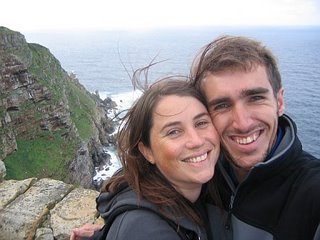Namibia






Namibia is a unique country. It consist of almost entirely of desert and extremely long stretches of straight lonely roads. In a country 4 times the size of Great Britain, only 2 million people live there. There are more black people in East London then in the entire country of Namibia.
Unlucky for us, we arrived into Namibia at the peak tourist time and therefore had to battle for hotel rooms and campsites with thousands of Italians and Germans. Lets just say that the continental European is not known for their patience and understanding demenour.
There are 2 main places to visit in Namibia. The towering red dunes of Sossusvlei located in the heart of the Namib desert and Etosha National Park.
Sossusvlei is stunning. In everything we read it is ranked right at the top of must see sights. Even getting up a the crack of dawn in the freezing cold is worth every minute. As the sun clears the distant mountains the dunes glow an unbelievable fiery red. The whole landscape goes from pitch black to brilliant colours in a matter of seconds. Sossusvlei is actually a name of one of the largest dunes and is closely bordered by Deadvlei. In between many of the dunes is a pan, basically the remnants of a now dry lake where everything has died a hot death. We spent the morning hiking in the dunes and feeling as though we had reached another world.
The highlight of any trip to Namibia is a visit to Etosha National Park. After much discussion we decided to visit the park for some wildlife viewing even though we had seemingly experienced it all in the Serengeti. Etosha is totally unique, it has the ability to bring the animals to you. In the dry season the landscape turns into a barren dry plain sparsely punctuated by receding waterholes. You simple drive up to the waterholes and watch the parade of animals come along for a drink in the midday heat. The park has 3 campsites which all have floodlit waterholes where you can sit long into the night and get a voyeurs view of the shy and nocturnal animals that are usually hidden from view. One of the most amazing sites we had in all our time was getting to see 3 black rhino drinking from the waterhole at night. The black rhino is still under direct treat from poachers because its horns are in great demand in the far east. It is a privilege to be able to see them from a distance, let alone up close and personal.
Overall Namibia was good, once we got past the hassle of peak tourist season. Visiting in the low season would be much better as all the open space would be just for you.














